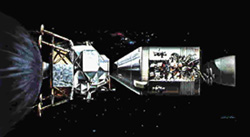 |
 |
06.12.06

Five Great Innovation Myths
BOEING'S former Chairman and CEO, Jim McNerney delivered a speech to the National Center for Healthcare Leadership and he spoke about innovation. He stressed that innovation is a team sport. It is best brought about by people working together across different groups and organizational lines. And it ought to be part of everyone’s job. He asks, how do you cultivate innovation? For starters, you should do no harm. Unfortunately, there are a number of popular but damaging misconceptions about innovation. From personal experience, I have seen how these romantic but misguided notions can lead to dysfunctional behavior—serving only to discourage creativity and growth. So here are five great innovation myths (Do you see these in your organization?): 3M was one of those companies that were faced with this transition. It had lost its edge on the real reasons why innovation happens. McNerney added: The team and I set out to change the mindset of the company in two basic ways: He concluded with:  I opened this discussion with the Apollo 13 story because it illustrates what an organization on the top of its form can do, in bouncing back from near catastrophe. The astronauts and the ground crews came up with one innovation after another—and none of those innovations, I might add, was especially high-tech. What they really involved was the brilliant use of scarce resources, a magnificent display of teamwork across a large organization, and the kind of gutsy decision-making that is the true mark of an organization with a high leadership component.
Posted by Michael McKinney at 07:31 AM
|
BUILD YOUR KNOWLEDGE
 

How to Do Your Start-Up Right STRAIGHT TALK FOR START-UPS 
Grow Your Leadership Skills NEW AND UPCOMING LEADERSHIP BOOKS 
Leadership Minute BITE-SIZE CONCEPTS YOU CAN CHEW ON 
Classic Leadership Books BOOKS TO READ BEFORE YOU LEAD |